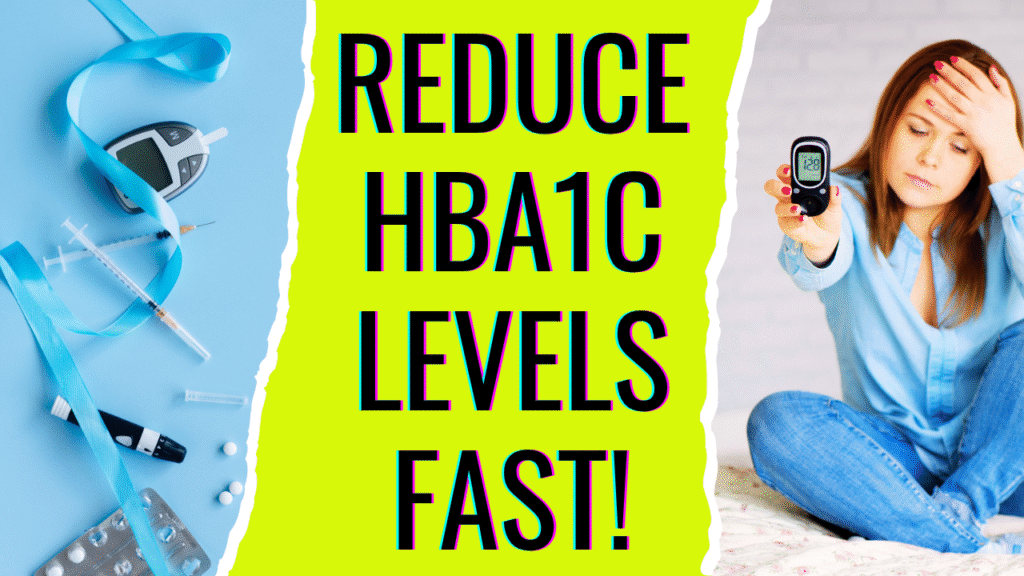
Struggling to manage your blood sugar and lower your HbA1c levels? You’re in the right place! Whether you’re dealing with type 2 diabetes, prediabetes, or simply want to optimize your health, these 10 science-backed steps will help you reduce HbA1c levels quickly and effectively. From diet tweaks to lifestyle changes, these practical tips are designed to fit into your everyday life and deliver results fast. Let’s dive into how to take control of your blood sugar and boost your wellness in 2025!
HbA1c is a measure of your average blood sugar levels over the past 2-3 months. High HbA1c levels can increase the risk of diabetes complications, like heart disease and nerve damage. The good news? With the right strategies, you can lower HbA1c naturally and improve your overall health. Here are 10 proven steps to get started.
10 Steps to Reduce HbA1c Levels Fast
1. Optimize Your Diet for Blood Sugar Control
Your diet is the foundation of blood sugar management. Focus on a low-glycemic diet packed with whole foods like leafy greens, lean proteins (chicken, fish), and healthy fats (avocado, nuts). Swap refined carbs—think white bread and sugary snacks—for complex carbs like quinoa, sweet potatoes, or oats.
Pro Tip: Add fiber-rich foods like beans and broccoli to slow sugar absorption. Studies show a low-carb diet can lower HbA1c by up to 1% in just months! What’s your favorite healthy meal? Share it below!
2. Exercise Regularly to Boost Insulin Sensitivity
Exercise is a game-changer for lowering HbA1c. Physical activity helps your muscles use glucose, improving insulin sensitivity. Aim for 150 minutes of moderate exercise weekly—brisk walking, cycling, or even dancing works great! Strength training, like lifting weights twice a week, can further enhance blood sugar control.
Why It Works: Exercise helps your body process sugar more efficiently, reducing HbA1c levels.
3. Monitor Your Blood Sugar Levels
Knowledge is power when it comes to blood sugar control. Regularly tracking your glucose levels with a continuous glucose monitor or traditional glucometer helps you see how food, exercise, and stress impact your numbers. This allows you to make real-time adjustments, like cutting back on high-carb foods that cause spikes.
Try This: Log your readings to spot patterns and stay on track with your HbA1c reduction goals.
4. Stay Hydrated for Better Blood Sugar
Dehydration can raise blood sugar levels, making it harder to lower HbA1c. Drink 8-10 glasses of water daily to help your kidneys flush out excess sugar. Skip sugary drinks like soda or juice, which can spike your HbA1c.
Bonus Tip: Try herbal teas or water infused with lemon and cucumber for flavor without the sugar. What’s your go-to hydration trick?
5. Manage Stress to Lower Cortisol
Chronic stress increases cortisol, a hormone that can elevate blood sugar and hinder HbA1c reduction. Combat stress with activities like meditation, deep breathing, or hobbies like gardening. Research shows just 10 minutes of daily mindfulness can improve blood sugar control.
Quick Start: Try a short breathing exercise to relax and support your diabetes management.
6. Prioritize Quality Sleep
Poor sleep can disrupt insulin sensitivity and raise HbA1c levels. Aim for 7-9 hours of quality sleep nightly with a consistent bedtime routine—dim lights, avoid screens, and sip calming chamomile tea. Studies confirm that good sleep stabilizes glucose regulation, helping lower HbA1c.
Struggling? Share your sleep challenges in the comments for extra tips!
7. Add More Fiber to Your Diet
Fiber is your ally for blood sugar stability. High-fiber foods like chia seeds, flaxseeds, avocados, and berries slow sugar absorption, helping reduce HbA1c. A 2020 study found that boosting fiber intake can lower HbA1c by up to 0.5% in people with type 2 diabetes.
Easy Hack: Add a tablespoon of chia seeds to your smoothie for a collagen-boosting and blood sugar-friendly boost.
8. Work with Your Doctor on Medications
Medications can play a key role in lowering HbA1c. If you’re on diabetes or prediabetes meds like metformin or insulin, stick to your prescribed plan. Discuss newer options, like GLP-1 agonists, with your doctor for potentially better results. Always consult your healthcare provider before making changes.
Action Step: Schedule a check-up to ensure your treatment plan aligns with your HbA1c goals.
9. Limit Alcohol and Quit Smoking
Excessive alcohol can spike blood sugar and sabotage your efforts to lower HbA1c. Stick to moderate drinking—1 drink daily for women, 2 for men—and avoid sugary cocktails. Smoking reduces insulin sensitivity, raising HbA1c, so consider a cessation program if you smoke.
Why It Matters: These changes support faster HbA1c reduction and overall health.
10. Stay Consistent and Track Progress
Consistency is key to lowering HbA1c fast. Stick to these steps and retest your HbA1c every 3 months to track progress. Celebrate small wins, like losing a few pounds or hitting 10,000 steps a day. Use a journal or app to log your diet, exercise, and blood sugar levels.
Motivation Tip: Share your progress in the comments to stay inspired!
Conclusion
Lowering your HbA1c levels doesn’t have to be overwhelming. With these 10 proven steps—from optimizing your diet to managing stress and staying consistent—you can take control of your blood sugar and feel your best in 2025. Start with one or two steps today and build from there. Which step are you excited to try first? Let us know in the comments, and let’s conquer those HbA1c levels together!
For more diabetes management tips and wellness advice, explore our other articles and stay tuned for weekly health inspiration.
